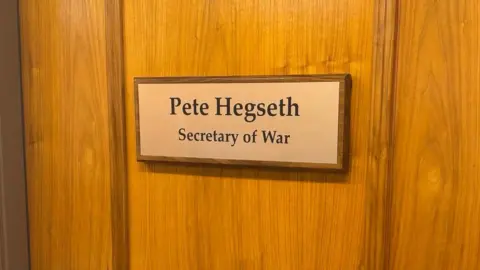The Department of Defense (DoD) made a pivotal decision on Monday, agreeing to a temporary reprieve in the cancellation of essential satellite data crucial for tracking hurricanes. This data, crucial for providing accurate forecasts, will now be accessible until July 31, extending the prior cut-off date of June 30. The National Oceanic and Atmospheric Administration (NOAA) had previously announced that data from three satellites jointly operated with the DoD would be terminated, giving rise to widespread concern among meteorologists and climate scientists regarding the implications for hurricane forecasts.
In a recent communication, NOAA attributed the original decision to a "significant cybersecurity risk." This course correction followed a request from a NASA scientist to continue data availability, highlighting the unexpected nature of the situation for those involved in weather forecasting.
Experts voiced alarm regarding the loss of access to data that was indispensable for tracking not only hurricanes but other important climate phenomena, such as changes in the polar ice sheets. Michael Lowry, a former National Hurricane Center and FEMA expert, emphasized the urgency of the situation, pointing out the approaching peak months of hurricane activity in August, September, and October.
In addition to hurricanes, the halted data services are critical for researchers monitoring trends in sea ice across the Arctic and Antarctic. Sharon Stammerjohn, a senior research associate at the University of Colorado Boulder, explained that the satellite imagery has been used since the 1970s to track the seasonal fluctuations of sea ice, providing necessary insights for understanding global climate change.
Dr. Stammerjohn noted that while alternative data sources from international agencies might partially compensate for the loss, discrepancies among different satellite calibrations and resolutions could complicate comparative analyses. This shift highlights a pressing need for more robust and secure methods for climate data collection to ensure continued monitoring of global environmental changes.
In a recent communication, NOAA attributed the original decision to a "significant cybersecurity risk." This course correction followed a request from a NASA scientist to continue data availability, highlighting the unexpected nature of the situation for those involved in weather forecasting.
Experts voiced alarm regarding the loss of access to data that was indispensable for tracking not only hurricanes but other important climate phenomena, such as changes in the polar ice sheets. Michael Lowry, a former National Hurricane Center and FEMA expert, emphasized the urgency of the situation, pointing out the approaching peak months of hurricane activity in August, September, and October.
In addition to hurricanes, the halted data services are critical for researchers monitoring trends in sea ice across the Arctic and Antarctic. Sharon Stammerjohn, a senior research associate at the University of Colorado Boulder, explained that the satellite imagery has been used since the 1970s to track the seasonal fluctuations of sea ice, providing necessary insights for understanding global climate change.
Dr. Stammerjohn noted that while alternative data sources from international agencies might partially compensate for the loss, discrepancies among different satellite calibrations and resolutions could complicate comparative analyses. This shift highlights a pressing need for more robust and secure methods for climate data collection to ensure continued monitoring of global environmental changes.




















